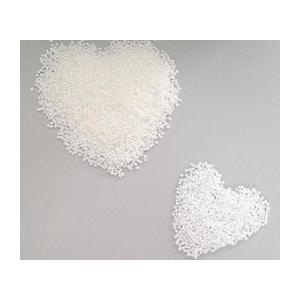
Add to Cart
virgin recycled polyethylene LLDPE granules for film, coating, plastic bags
Product Description
PE (polyethylene, abbreviated PE) is a thermoplastic resin polymerized ethylene obtained. In the industry, but also copolymers of ethylene with minor amounts of α- olefins. Polyethylene odorless, non-toxic, feel like wax, has excellent low temperature properties (lowest temperature up to -100 ~ -70 ° C), good chemical stability, resistance to most acid-base erosion (impatience with oxidation the nature of the acid). Room temperature, not soluble in common solvents, water absorption, excellent electrical insulation.
LLDPE is a substantially linear polymer with significant numbers of short branches, commonly made by copolymerizationof ethylene with short-chain alpha-olefins (for example, 1-butene, 1-hexeneand 1-octene). The copolymerization process produces an LLDPE polymer that has a narrower molecular weight distribution than conventional LDPE and in combination with the linear structure, significantly differentrheologicalproperties. Linear low-density polyethylene differs structurally from conventional low-density polyethylene (LDPE) because of the absence of long chain branching.
The popularity of linear low density polyethylene(LLDPE) is due to its higher tensile strength and superior impact and puncture resistance than its low density polyethylene (LDPE) rival. This has allowed converters to make thinner films without sacrificing strength, saving material and reducing costs. LLDPE’s good toughness relative to other products has also opened up new application areas. However, LLDPE is not as easy to process as LDPE and it has poorer clarity. As a result, converters often use blends with LDPE to improve these properties.
Specification
LLDPE
| Specification | Our Standard |
| MFR (190ºC,2.16kg) | ≤1.5 |
| Density | ≤0.95 |
| Elongation at break(%) | ≥700 |
| Tensile Strength(Mpa) | ≥25 |

Application
1. Film applications such as food and non-food packaging, shrink/stretch film and non-packaging uses. (The trend in food packaging films is towards high performance film structures that are less permeable to increase shelf life and enhance flavours).
2. Other film applications such as ( using metallocene or single site catalyst technology) multi-layer cast stretch film, agricultural greenhouse film, saran wrap, bubble wrap, medium to heavy duty bags, lamination packaging film and multilayer film barriers used in drink cartons.
3. Extrusion coating applications where it helps protect the contents of liquid containers, primarily for paper and paperboard packaging.
Injection moulding sector has outlets such as lawn and garden products, kitchen accessories, luggage and furniture parts, recreational products and toys.
4. Non-food packaging applications are requiring stronger films such as consumer, industrial and agricultural uses.
5. Plastic bags and sheets (where it allows using lower thickness than comparable LDPE), plastic wrap, stretch wrap, pouches, toys, covers, lids, pipes, buckets and containers, covering of cables, geomembranes, and mainly flexible tubing.
